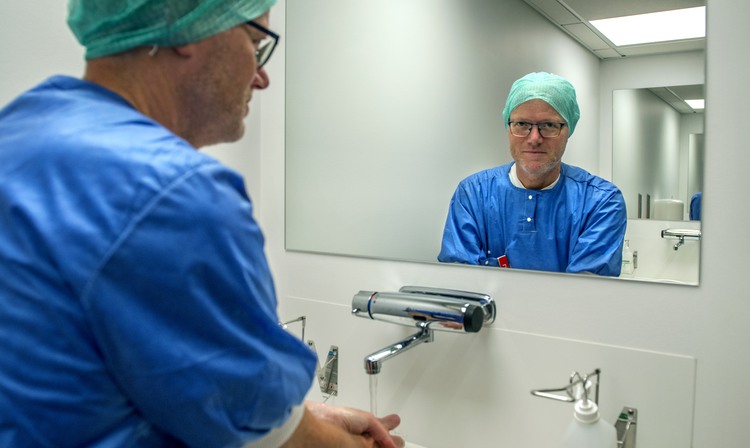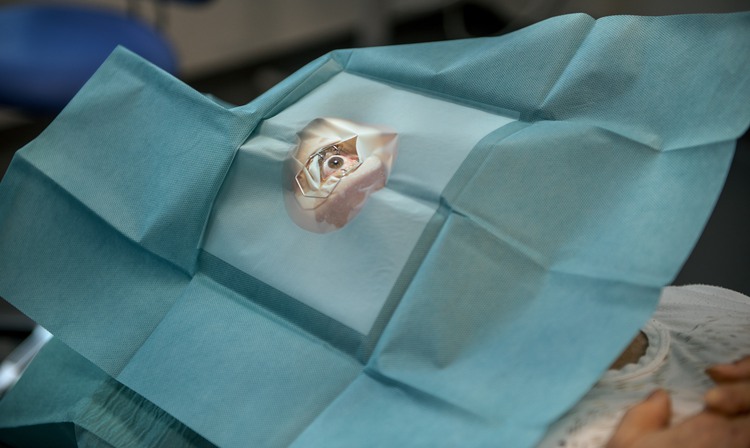St. Erik is currently one of the main actors in Region Stockholm operating injection activities. The procedure entails a quick injection into the eye as an alleviating treatment for patients with chronic eye disorders. The patient demand is very high.
I have injected some 27 patients this morning alone, says David Epstein, senior consultant in medical retina at St. Erik Eye Hospital, who has long experience giving this type of treatment.

David Epstein prepares for the next injection.
Photo: Jens Sølvberg
When this interview takes place, only a few weeks have passed since the move of St. Erik Eye Hospital, and getting into the new routines have been a smooth process, in his opinion.
It has been surprisingly easy, no IT-related issues at all. And we have already gone back to full operation, says David Epstein.
Around 80 per cent of the patients injected have some form of age-related change in the macula known as macular degeneration. This disorder is the most common cause of visual impairment in the elderly today, and it is caused by degenerated visual cells, bleeding and swelling in the retina.
Injections in the form of growth inhibitors prevent unhealthy blood vessels from forming and also reinforces the vessel walls, which causes the swelling to go down. This stops the progress of the disease, explains David Epstein.
The disorder is chronic, but has not always been as effectively treated. Nowadays, regular treatments is the most common course of action. Most often, injections are given several times per year over a very long time.
As more people get older and get the disease, the pressure on the injection clinic has been greatly increased in recent years. In 2020, the injection clinic at St. Erik Eye Hospital will administer 20,000 treatments and the rate of increase is nearly 15 per cent annually.
In addition to macular degeneration, St. Erik also treat patients with blood clots in their eyes or diabetes, which can also require injection treatment in severe cases.

The injections are quick but require careful preparation. The patient is given anaesthetic drops and does not feel any pain during the injection.
Photo: Jens Sølvberg
Just like in the old premises, there are two treatment rooms dedicated to eye injections only. But unlike before, there is a separate waiting room for injection patients.
Many of the patients who come to us have received 50–60 treatments. Some of them do not enjoy having to come here. But these are chronic disorders, and unfortunately there is no cure. Thanks to the new waiting room and the new lovely premises, the environment is a bit quieter for the patients, he says.
In the waiting room outside the injection clinic, the patients put on a surgical cap and are then given anaesthetic eye drops before being brought to the special waiting room. Inside the actual treatment room, they are met by two people: a doctor and a nurse. The patient lies down, gets a little more anaesthetic and then there is a sensation of a quick prick.
The procedure is not dangerous, but the patients are advised to take it easy afterwards. Patients who are still working can normally return to work after the treatment.
.jpg?width=750&height=448&ext=.jpg)
David Epstein and his colleagues in medical retina have a steadily growing group of patients in need of eye injections.
Photo: Jens Sølvberg
"Getting an eye injection is a quick procedure. You are in the room for no more than five minutes. In our new premises, the patient exits through another door, instead of going out through the waiting room again. I think that is a relief for our patients," says David Epstein in closing.
Text: Maja Lundbäck